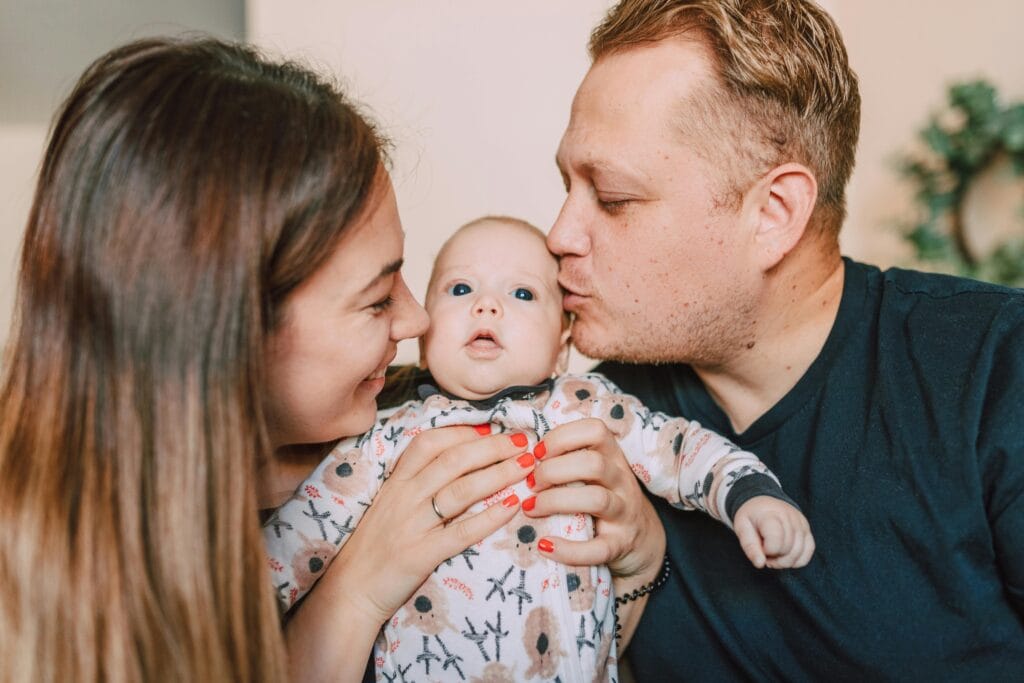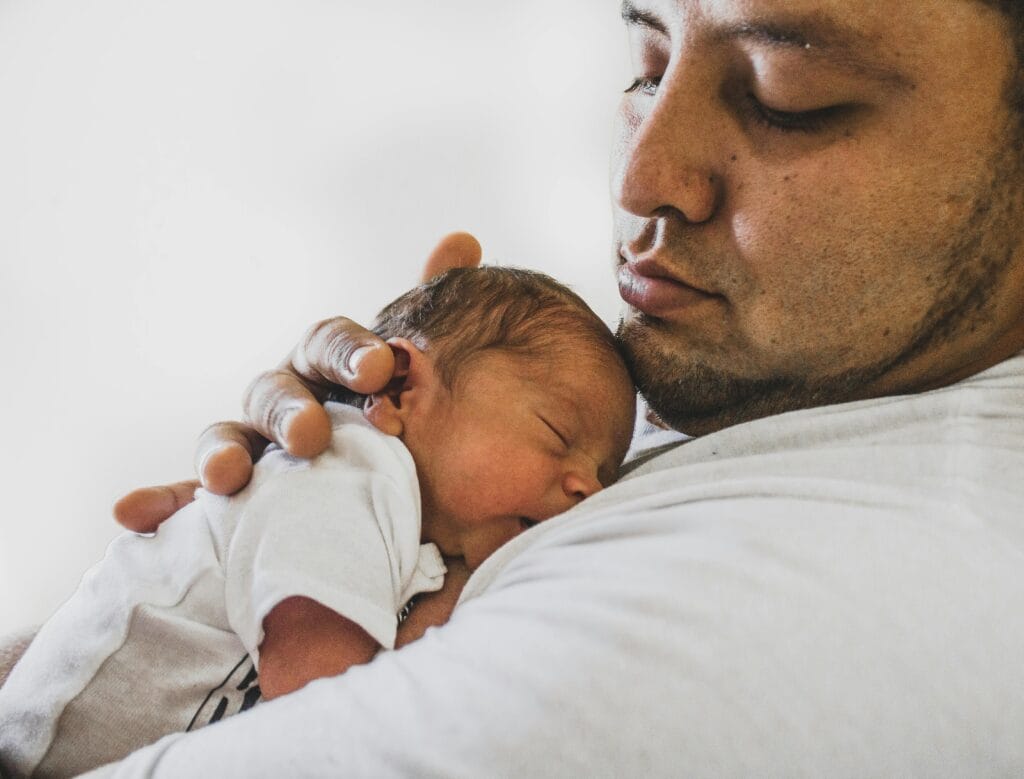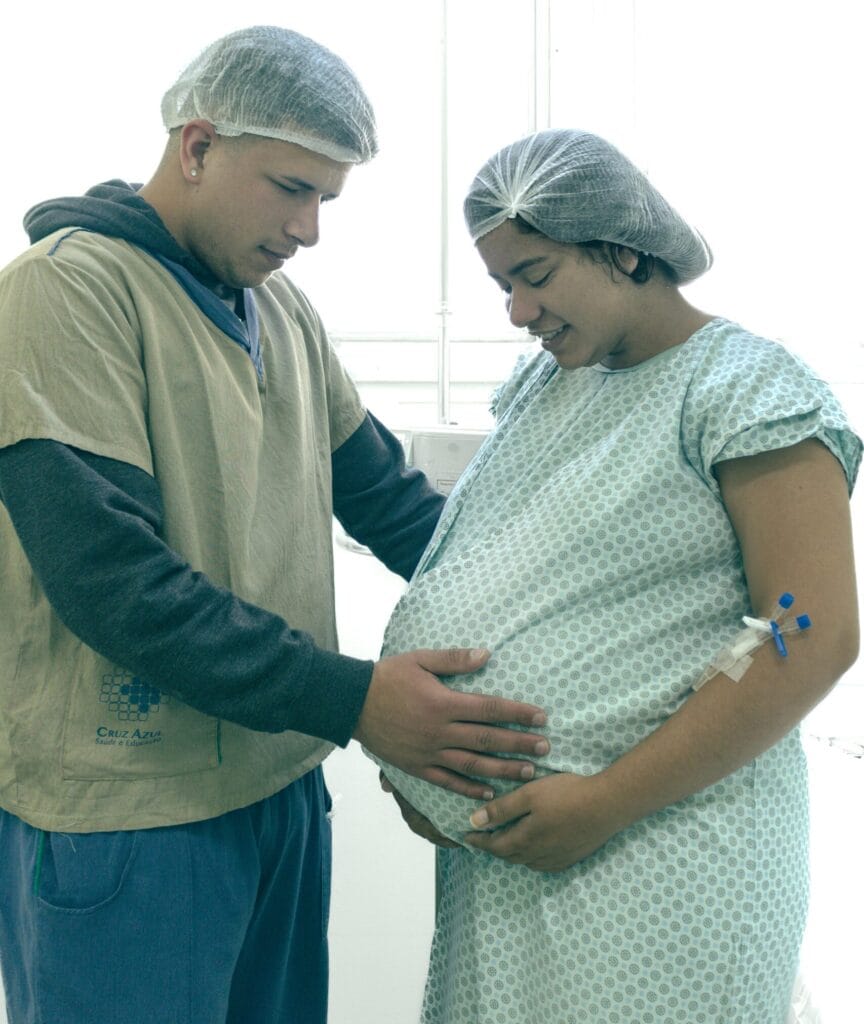Childbirth is often seen as a marathon of physical endurance and emotional intensity, but what many expectant dads don’t realize is that behind all the visible action, a fascinating and intricate hormonal process is unfolding. From the first contractions to the final push, hormones are orchestrating the entire process of labor and delivery. These natural chemicals not only help your partner’s body bring new life into the world but also influence how she feels emotionally and physically during labor.
As a new dad, understanding the role of hormones in childbirth can equip you with a deeper sense of empathy and give you the tools to support your partner during this incredible journey better. Let’s dive into the science of childbirth hormones and see why they’re important for both of you to understand.

The Major Hormones that Drive Childbirth
The body uses a complex symphony of hormones during pregnancy and labor to ensure that childbirth happens smoothly. Each hormone has a specific role, and together they work to guide the labor process from beginning to end. Here’s a closer look at the key hormones involved:
- Oxytocin: The Love Hormone and Labor Driver
Oxytocin, often referred to as the “love hormone” because of its big role in bonding and affection. But during labor, it has an even more critical function—stimulating contractions. Think of oxytocin as the body’s natural labor starter. Once labor begins, the hormone is released in increasing amounts, triggering stronger and more frequent contractions that help move the baby down the birth canal.
When you understand oxytocin’s role, It will help you to support your partner better when labor begins. When she feels calm, relaxed, and loved, her body produces more oxytocin, which can help labor progress. As a dad, you can create an environment that encourages this process. Simple acts like holding her hand, offering reassuring words, or maintaining a peaceful space can boost oxytocin levels and make the labor experience smoother.
- Endorphins: Nature’s Pain Relievers
Endorphins are the body’s natural painkillers, often referred to as “feel-good hormones.” During labor, as the intensity of contractions increases, the body releases more endorphins to help manage the pain. This hormone acts like a natural morphine, giving the mother bursts of pain relief and helping her stay calm and focused.
As a man, understanding that labor is painful, but the body has its own built-in mechanisms to help cope with the pain would help you do things that boost the production of this hormone such as encouraging your partner to move, breathe deeply, and try different relaxation techniques. You’ll also want to remind her that the pain is part of the process and that her body is well-equipped to handle it.
- Prolactin: The Nurturing Hormone
Prolactin is known as the “mothering hormone” because it helps with milk production after birth, but it also plays a role during labor. Prolactin levels increase in late pregnancy and rise even higher during labor, preparing the mother for breastfeeding and nurturing once the baby is born.
While prolactin is essential for your partner’s body to produce milk, it also promotes feelings of calm and nurturing. This means that the hormonal changes your partner experiences during labor and breastfeeding will help her bond with the baby. As a dad, your role is to support this transition by creating a stress-free environment that encourages those natural bonding instincts.
- Relaxin: The Flexibility Hormone
Relaxin is a hormone that increases during pregnancy and plays a vital role in loosening ligaments and joints in the pelvis to make it easier for the baby to pass through the birth canal. This hormone softens the cervix and helps the pelvis expand during labor.
Though relaxin is hard at work behind the scenes, its effects can make your partner feel physically different, sometimes leading to back pain or joint discomfort as her body prepares for childbirth. Offering massages or helping her find comfortable positions can relieve some of this discomfort and make her feel more supported.
- Adrenaline: The Fight or Flight Hormone
Adrenaline, also known as the stress hormone, typically increases when we feel fear or anxiety. While adrenaline is useful in emergencies, during labor, it can actually slow down the process. If the mother is stressed or anxious, adrenaline levels can spike, interfering with the release of oxytocin and slowing contractions. In natural births, adrenaline levels may rise just before the pushing stage to give the mother a burst of energy, but high levels of stress-induced adrenaline during earlier labor stages can stall progress.
Your job as a dad is to help keep your partner calm and grounded. Reduce unnecessary stress by creating a calm, quiet environment, offering words of encouragement, and reassuring her that everything is progressing as it should. When adrenaline is minimized, the other beneficial hormones can do their job more effectively.
The Emotional Side of Hormones: What You Need to Know As a Dad
While hormones work to regulate the physical process of childbirth, they also have a profound effect on your partner’s emotional state. As labor progresses, hormonal shifts can cause her to feel a wide range of emotions—from calm and content one moment to anxious or frustrated the next.
Oxytocin, in particular, plays a key role in mood regulation. High levels of oxytocin can make your partner feel more bonded and connected, while low levels due to stress or anxiety may result in feelings of detachment or frustration.
As a dad, it’s important to be aware of these emotional swings and respond with empathy. Your partner may need you to be her emotional anchor, especially during the more intense moments of labor. Offering physical support, like a reassuring touch, as well as emotional support by listening to her needs, can keep her in a more positive emotional state.
Post-Delivery Hormones: A New Role for Dads
Once the baby is born, the hormone show doesn’t stop. Post-delivery, oxytocin levels remain high as your partner bonds with the baby, particularly during skin-to-skin contact and breastfeeding. Prolactin levels also surge to ensure successful breastfeeding, while endorphins help her recover from the physical exhaustion of labor.
This is also a special time for dads. Believe it or not, dads can experience hormonal changes, too. Studies have shown that new fathers also experience a rise in oxytocin when they engage in skin-to-skin contact with their newborns. Holding your baby for the first time triggers bonding hormones, helping you feel more connected to your little one.
Additionally, the calming effects of oxytocin and prolactin in your partner will make those first few hours with the baby an incredibly peaceful and emotional experience. As you and your partner work together to nurture your newborn, your role as a dad will become clearer, and you’ll begin to understand just how powerful the bond between you and your child can be.
Summing it up
Hormones might be invisible, but their effects are anything but. They drive the entire process of childbirth, from the first contraction to the moment your baby is safely in your arms. By understanding how hormones work, you can become a more empathetic, supportive, and active participant in the birthing process. Your presence, your words, and your actions all have the power to influence your partner’s hormonal balance, helping her stay calm and strong throughout labor.
So, as you prepare for fatherhood, remember that childbirth is a team effort. You might not be the one giving birth, but your role as a supportive, engaged dad will make all the difference in bringing your baby into the world.











